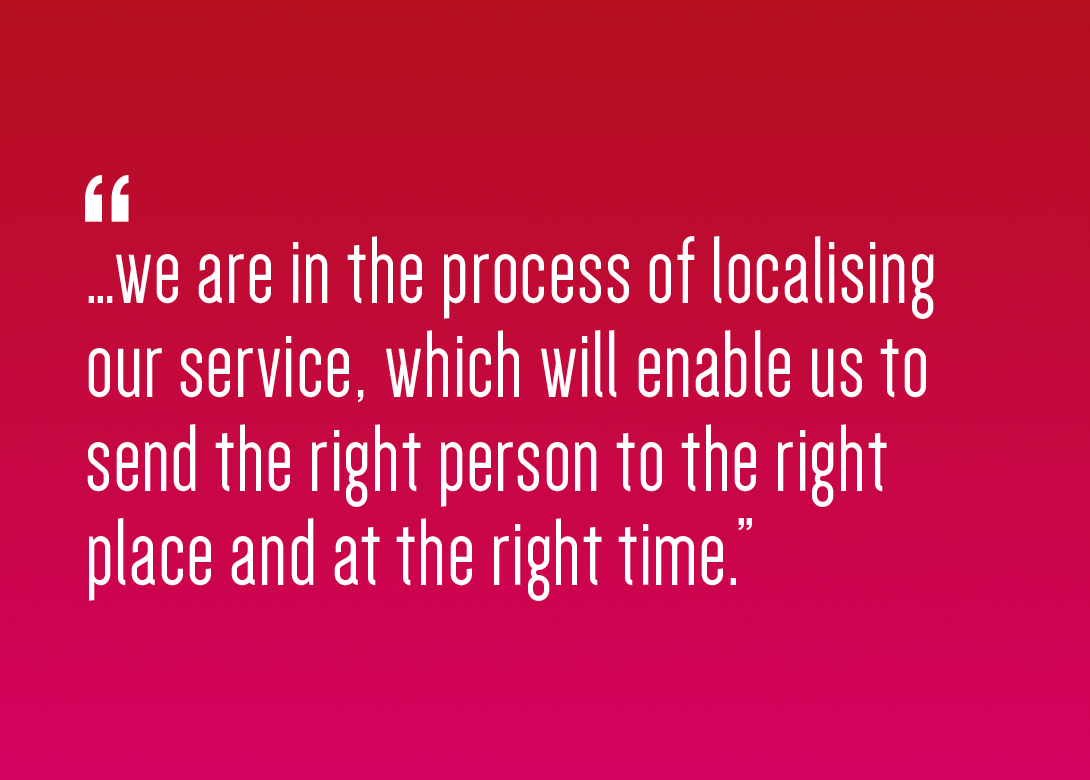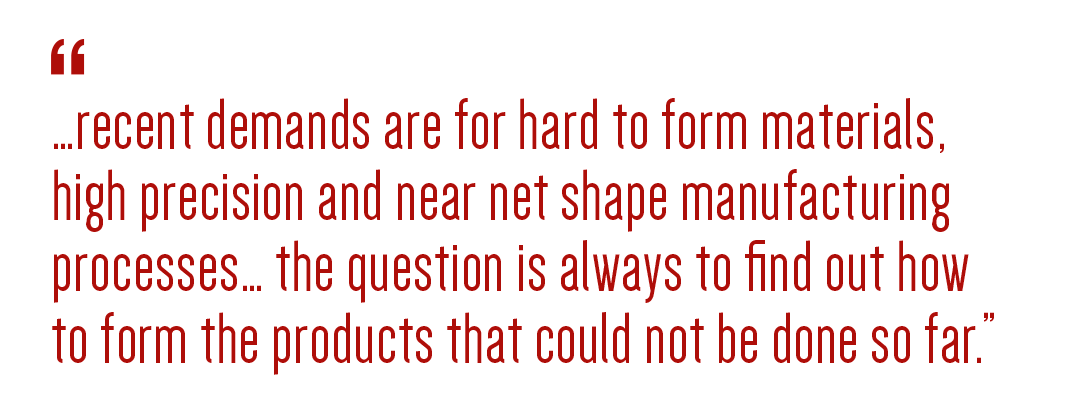
Founded in 1911, Nakashimada Engineeing Works Ltd has combined tradition with technology to establish itself as a leading manufacturer of cold/warm heading machinery that satisfies the demands of component and fastener makers worldwide. Here we speak to President and CEO Masahiro Nakashimada to find out how the company has developed and what its plans are for the future.
What have been the key points in Nakashimada’s development over the last 100+ years and what have been the main challenges?
“Since 1911 we have made many different types and kinds of machines. Initially we started with precision grinding machines and crankshaft grinding machines. However, our precision machine building technology and experience led to the creation of headers. The turning points were in 1960 with the H20 model and in 1969 with the 2D3B header.
Over the last 50 years we have increased our in-house production rate of machine parts and improved the drawing and processing of each machine so that we are now known for our high precision and durable cold forging machines. On average, we develop 2 to 3 new machine types and close to 100 new tooling projects every year. Having said that, we still have not produced a perfect machine. That is always our aim for the future.”
What are the main advantages of customers using Nakashimada machinery and how does the company ensure that it presents a consistent service to customers around the world?
“At Nakashimada we are known for the high precision of our produced parts, as well as the durability and reliability of the machines. In addition to providing the machinery, we also have an excellent after sales service and we can supply spare parts to customers as and when they need them.
We sometimes had a problem with the language barrier, being a Japanese based company, and an even bigger headache was trying to acquire a working visa for our service engineers. However, we are in the process of localising our service, which will enable us to send the right person to the right place and at the right time.”
What are the benefits of being a Japanese manufacturer? What opportunities does this bring?
“A very difficult question. Personally, I am fond of old classic cars and I have owned some German, Italian and English cars. One of the charms of these old industrial products is that they reflect the character of each producing country. Certainly Japanese products have their charm as well. Having said that, while globalisation opens many markets, it has also blurred the differentiation of values these products from different countries represent. At present, products ‘Made in Japan’ are highly trusted. But with the need for global talents, I believe it is important for Nakashimada to develop a unique on-site education system for training our workers regardless of their nationality. I hope that from now on customers choose our products not because they are ‘Made in Japan’ but rather they are ‘Made by Nakashimada’.”
How are customers’ needs changing and which markets have potential for the future?
“The era when the need for production speed was paramount has somewhat changed. The biggest concerns now are the prevention of scratches and the contamination of inferior products, as well as safety issues. We have to embody new ideas regarding these aspects.
Meanwhile, recent demands are for hard to form materials, high precision and near net shape manufacturing processes. Regardless of the industry and its application, the question is always to find out how to form the products that could not be done so far. I believe the market is always thinking ahead.”
How important is it to constantly be innovating products and services and do you think that technology developments have gone as far as they can?
“It is a machine maker’s mission to pursue technological advancement. Yet, we must not forget that about 70% of the nearly 10,000 sets of machines delivered to the market are still running. It is also our responsibility, as far as possible, to continue servicing and supplying parts to these old machines.
Including fasteners, there are still many parts that cannot be forged into shape due to various technical reasons. As long as there are parts that cannot be formed, forging technology still needs to improve. As such, headers, part-formers and manufacturing processes have to constantly evolve to realise that. Automation and automatic monitoring are key developments going forward. On top of improving the basic performance of machines, we must also predict the operation needs for the future. There are still many things to do.”

What are Nakashimada’s plans and challenges for the future?
“Our older generation of engineers and craftsmen have contributed a great deal over the years to the development of our in-house technology and know-how. As time goes by, the passing down of knowledge from these veterans to the new generation has become one big challenge. From now on, in order to foster more aggressive talents, it is necessary to convey to the young generation that Nakashimada is the place for new opportunities and technological development.
Concentrating on the development of selected and special machine types – in order to offer customers the best machine to achieve total customer satisfaction – is an important aspect, as is the job satisfaction sought after by Nakashimada employees.”
What are your thoughts on the consolidation trends that have been happening in the machinery sector? What do you think will happen in the future?
“All technology developed will be for more sophisticated machines that are easier to produce. They must also be safer to use and environmentally friendly. We must make machines that surpass customers’ requests. Since attracting and keeping excellent young people is an important issue, Nakashimada is no exception, we must maximise the effective use of our limited human resource to supply the best machines in the world. We aim to select and concentrate on the development of machines for specialty areas.”
How does Nakashimada intend to integrate with Industry 4.0 and what are your thoughts on 3D printing?
“Automation and robotisation through the use of the internet makes the human factor more generalised. I expect that manufacturing activities in different parts of the world will also become more standardised. The development of technology will contribute positively to both the living and working environment especially for those who are physically disabled. Human dignity and pride should not be a victim of economic development. Technological advancement should be for the betterment of human race and not to eliminate the importance value of it.
As for 3D printing, the availability of future materials will increase and so will the versatility of their usage. However, they should not hinder the development of other technology. In our case, we emphasise the use of hand scraping to enhance our tight machine clearance. Differences are present depending on individual worker’s experience. I must admit that if individual differences are eliminated, machines and parts with the same tolerance can be made. However, there are threats of imitation, and risk of information leaks such as technical drawings. As the pride of a maker, whether these reasonable and ethical problems can be solved will be the biggest concern.”

Biog
Will joined Fastener + Fixing Magazine in 2007 and over the last 15 years has experienced every facet of the fastener sector - interviewing key figures within the industry and visiting leading companies and exhibitions around the globe.
Will manages the content strategy across all platforms and is the guardian for the high editorial standards that the Magazine is renowned.








